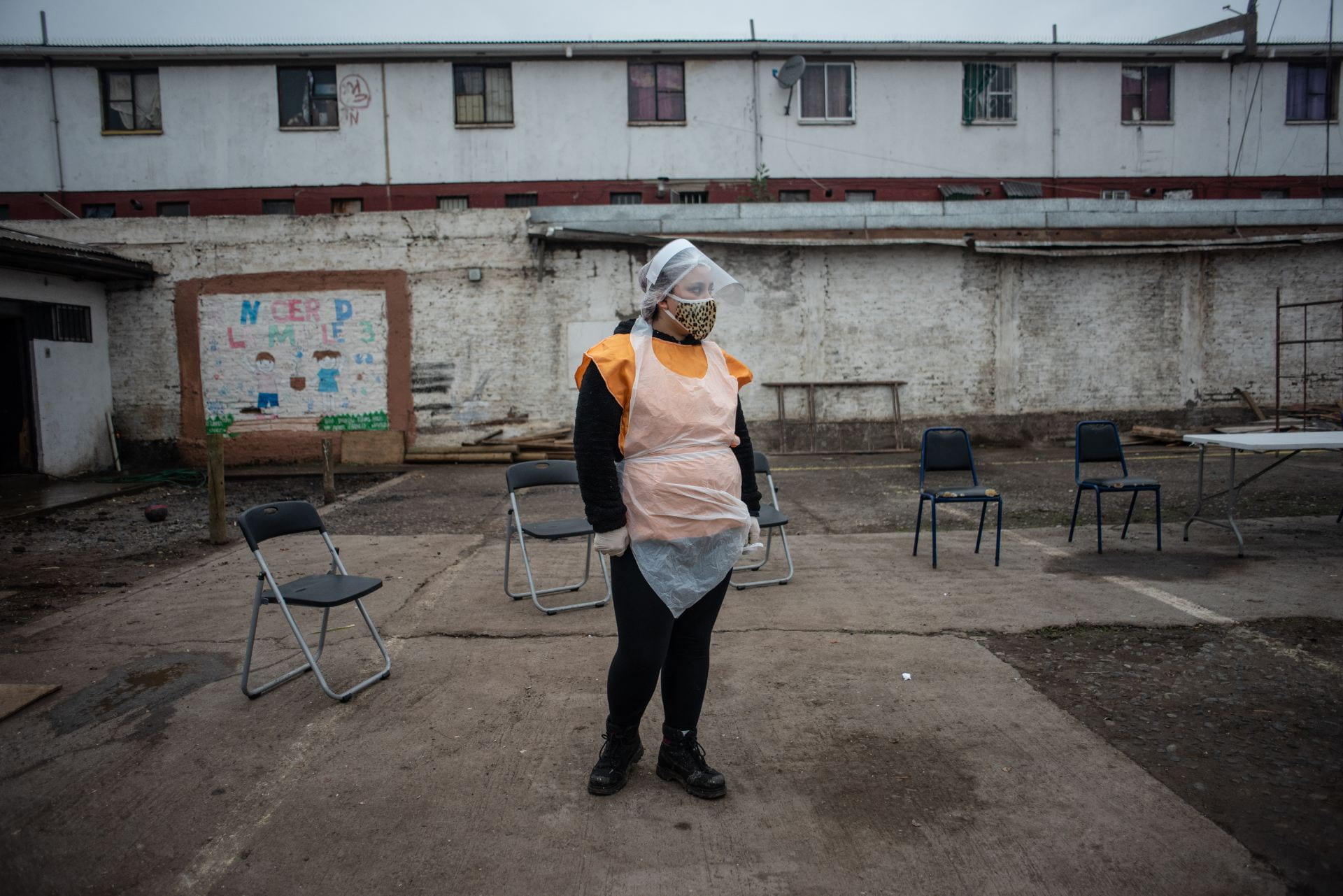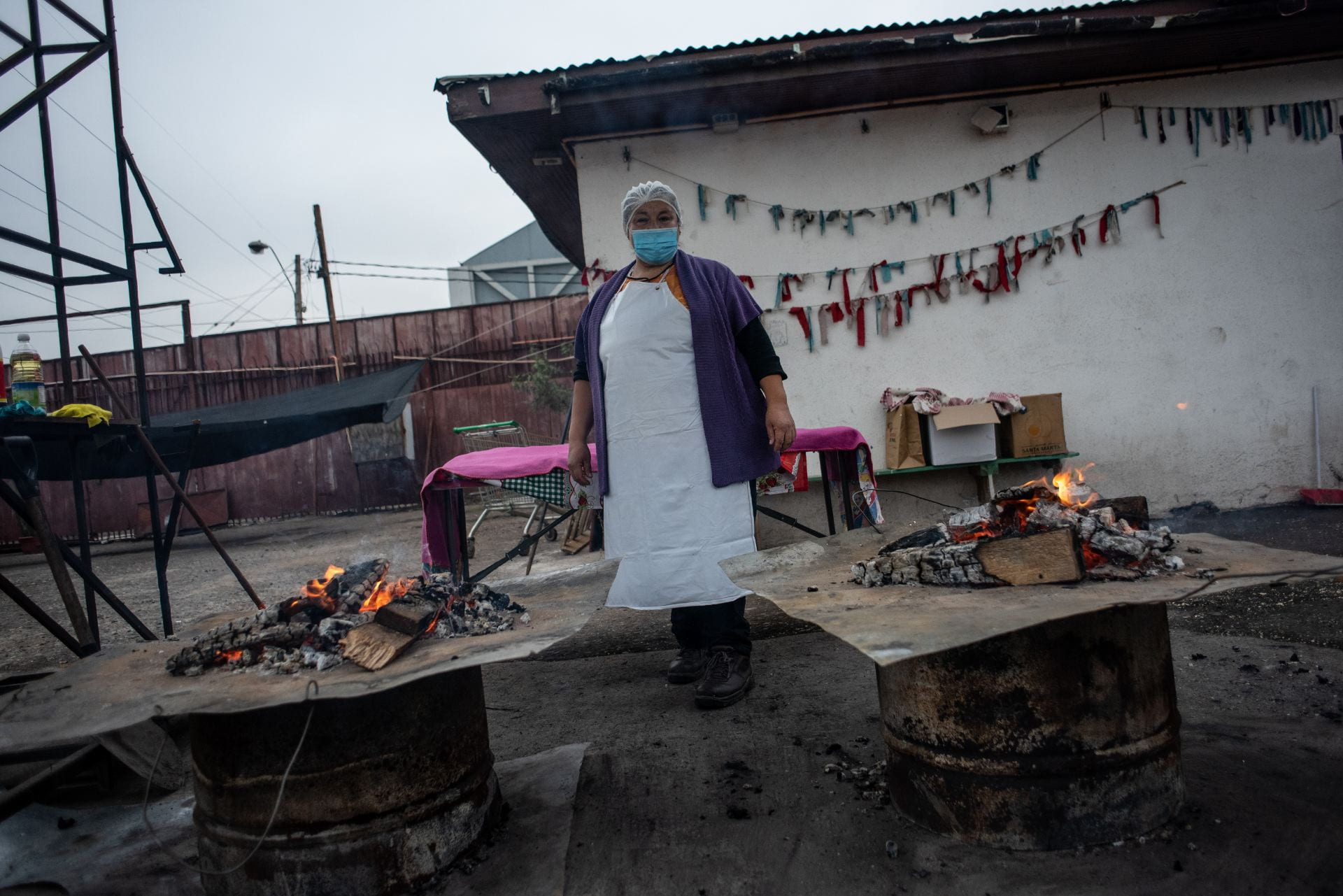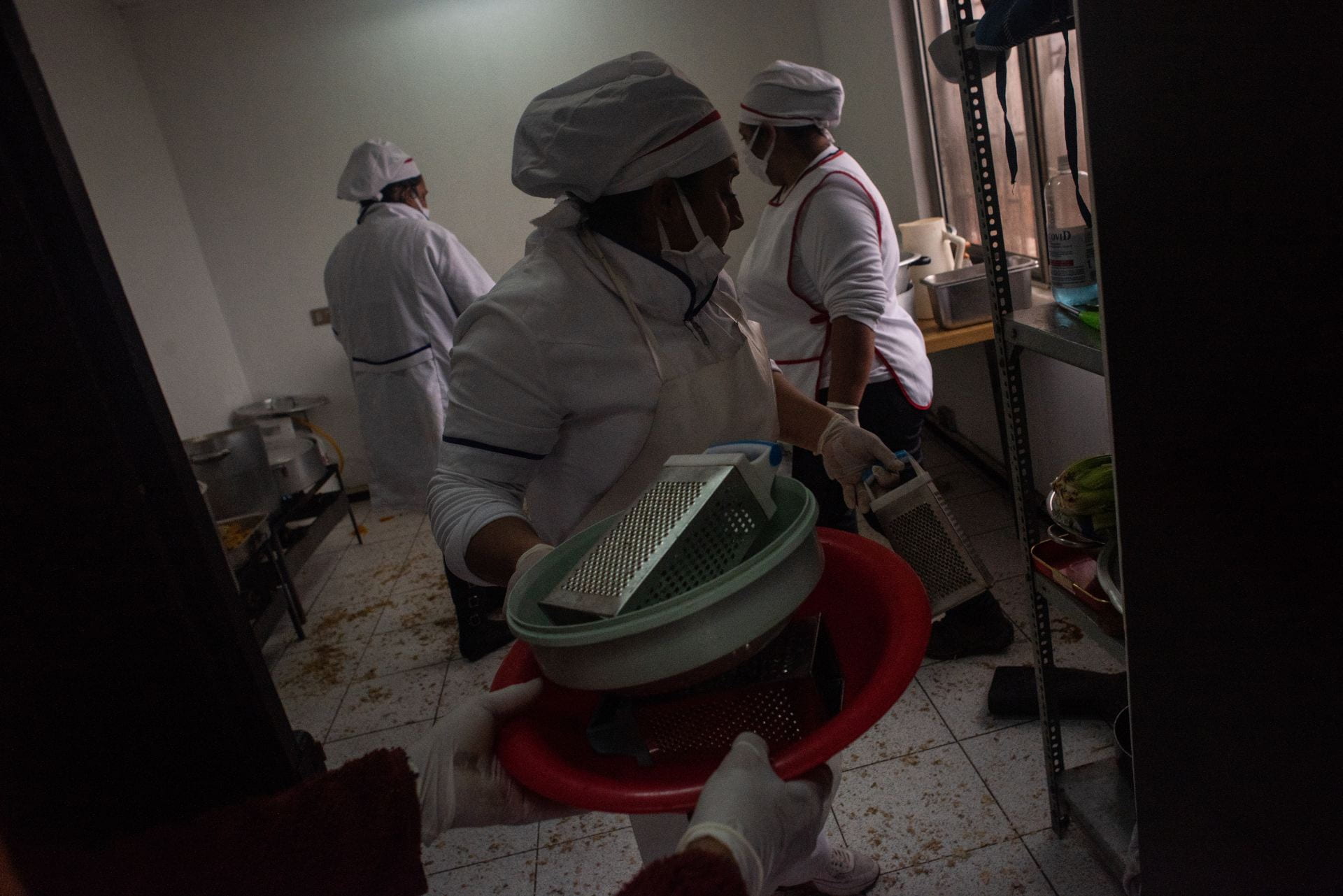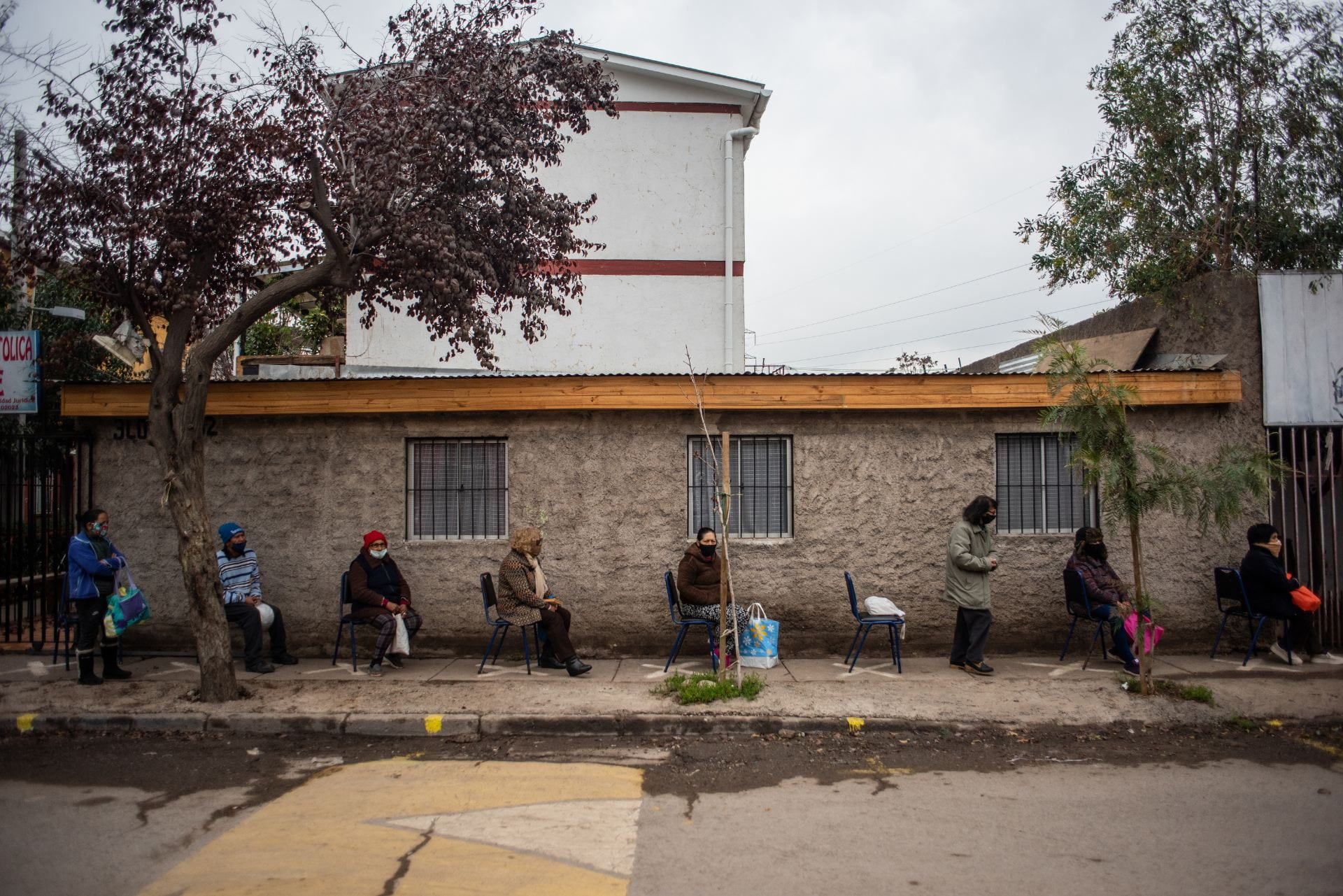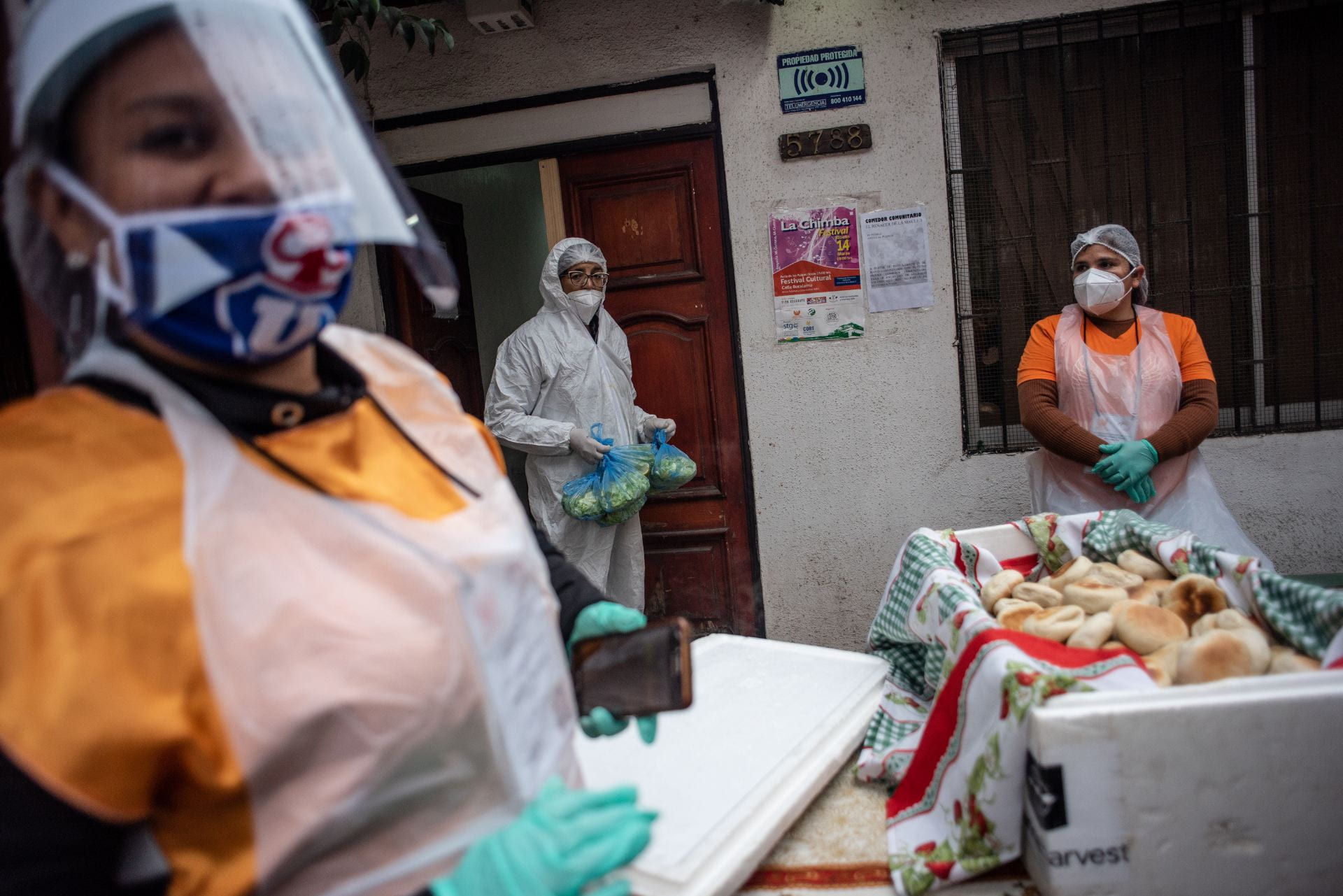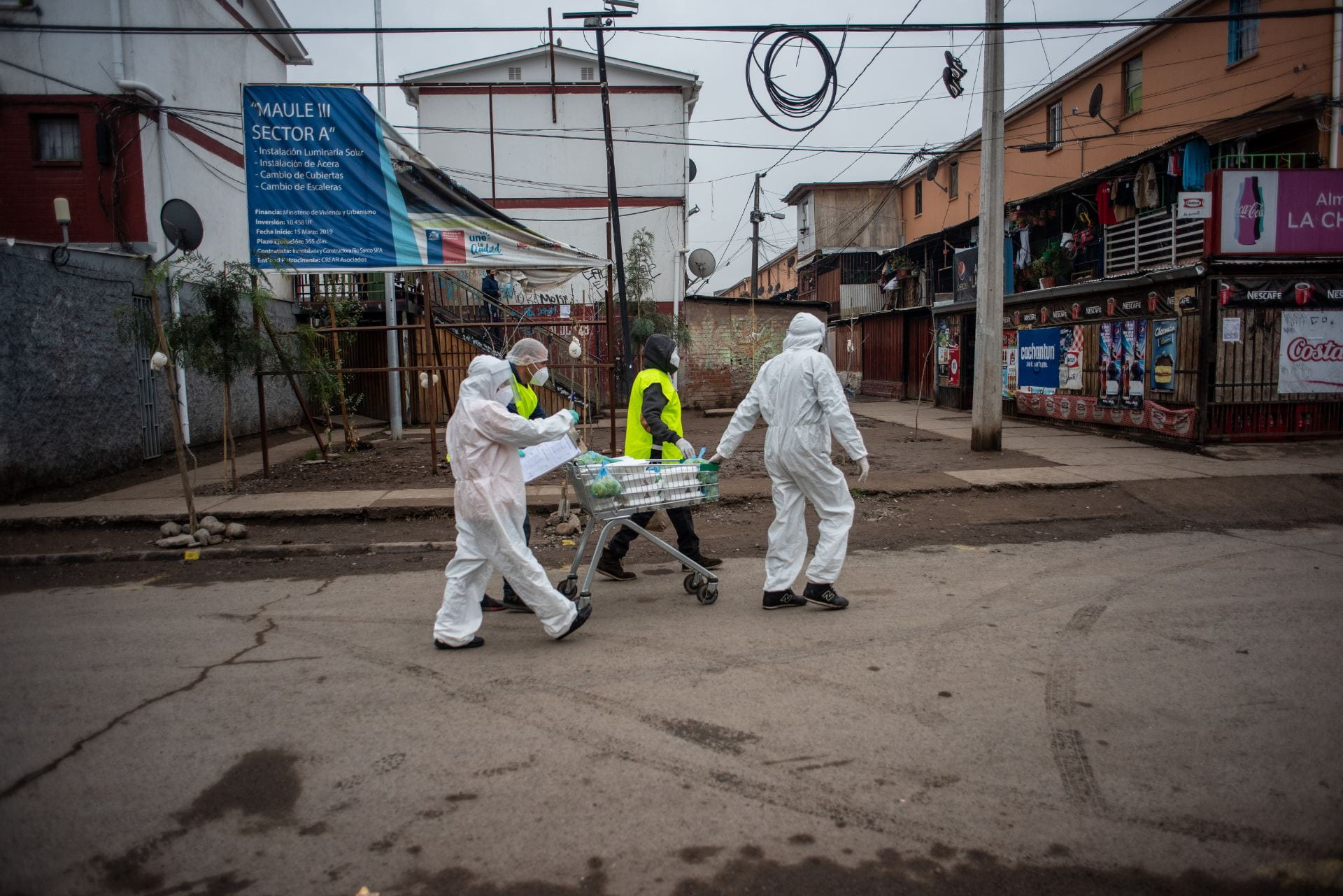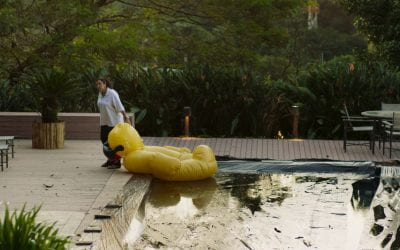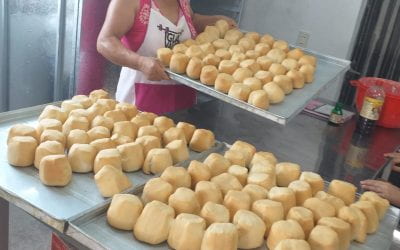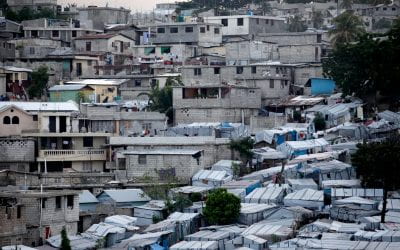Solidarity through Community Dining Rooms: Olla común
A photo by Claudio Santana was chosen for the digital photo exhibition, “Documenting the Impact of Covid-19 through Photography: Collective Isolation in Latin America,” curated in collaboration with ReVista and the Art, Culture, and Film program at Harvard’s David Rockefeller Center for Latin American Studies (DRCLAS.)
The exhibition, based on an Open Call for Photography launched in July 2020, aims to create a critical visual record of our unprecedented times so they can be remembered by future generations.
Global pandemic, almost 10,000 people dead in Chile, the social upheavals and protests since last October, with young people mutilated and tortured. In the midst of this hopeless landscape, solidarity among equals is born, community dining rooms where bread is shared and a word of love is an act of respect and community.
The Maule III community dining room—olla común—in Renca prepares almost 500 lunches that it distributes among neighbors, with contributions from small business owners and residents of the area. This act is repeated throughout the metropolitan region, with more than 300 community dining rooms. This series is part of the record related to the current pandemic, along with economic inequality, racism and discrimination.
Claudio Santana is a Chilean photographer.
Related Articles
Notes on Filmmaking
English + Português
When the pandemic was declared March 11, 2020, I was in the midst of releasing a film. I am a Brazilian filmmaker, and the film in question…
Let’s Talk about Resilience
English + Español
When I joined the International Domestic Workers Federation (IDWF) family in October 2019, I never imagined that a few months later I would experience both the pain and…
A Few Shocks Away from Poverty
English + Español
Growing up in Lima Peru, I can remember people saying, “There is no middle class.” This was an exaggeration. Not all the non-poor were rich—far from it—but the differences in the living …

